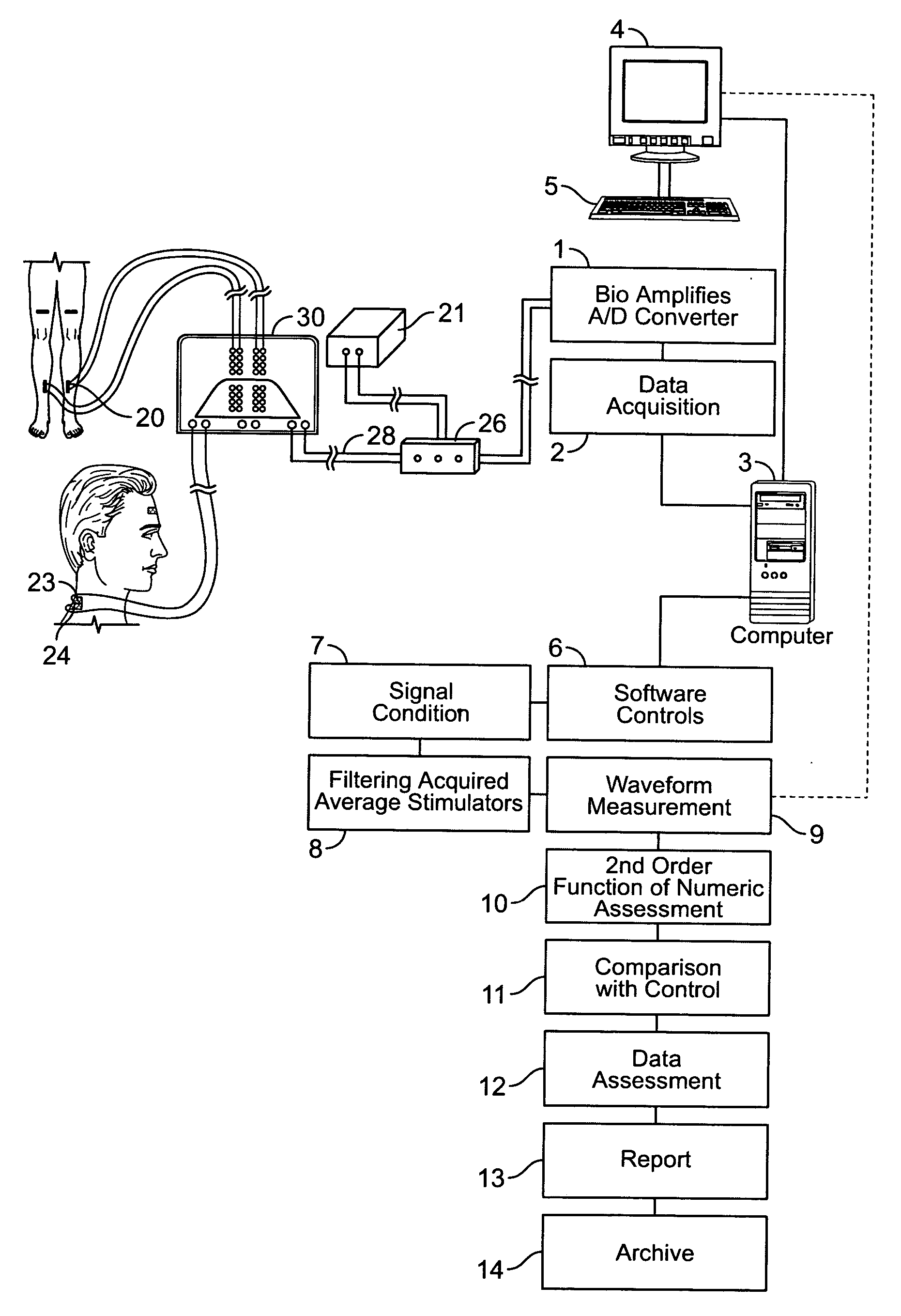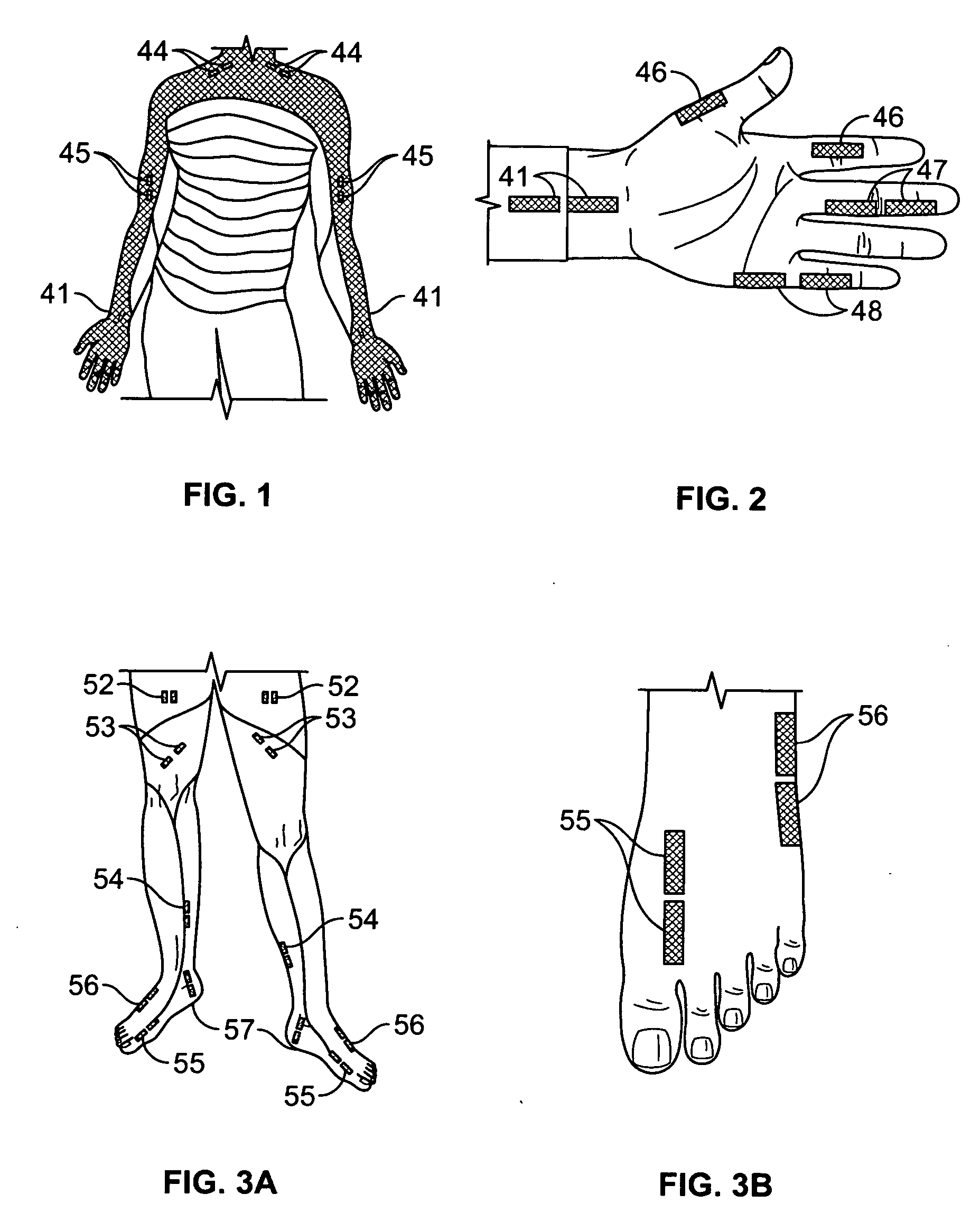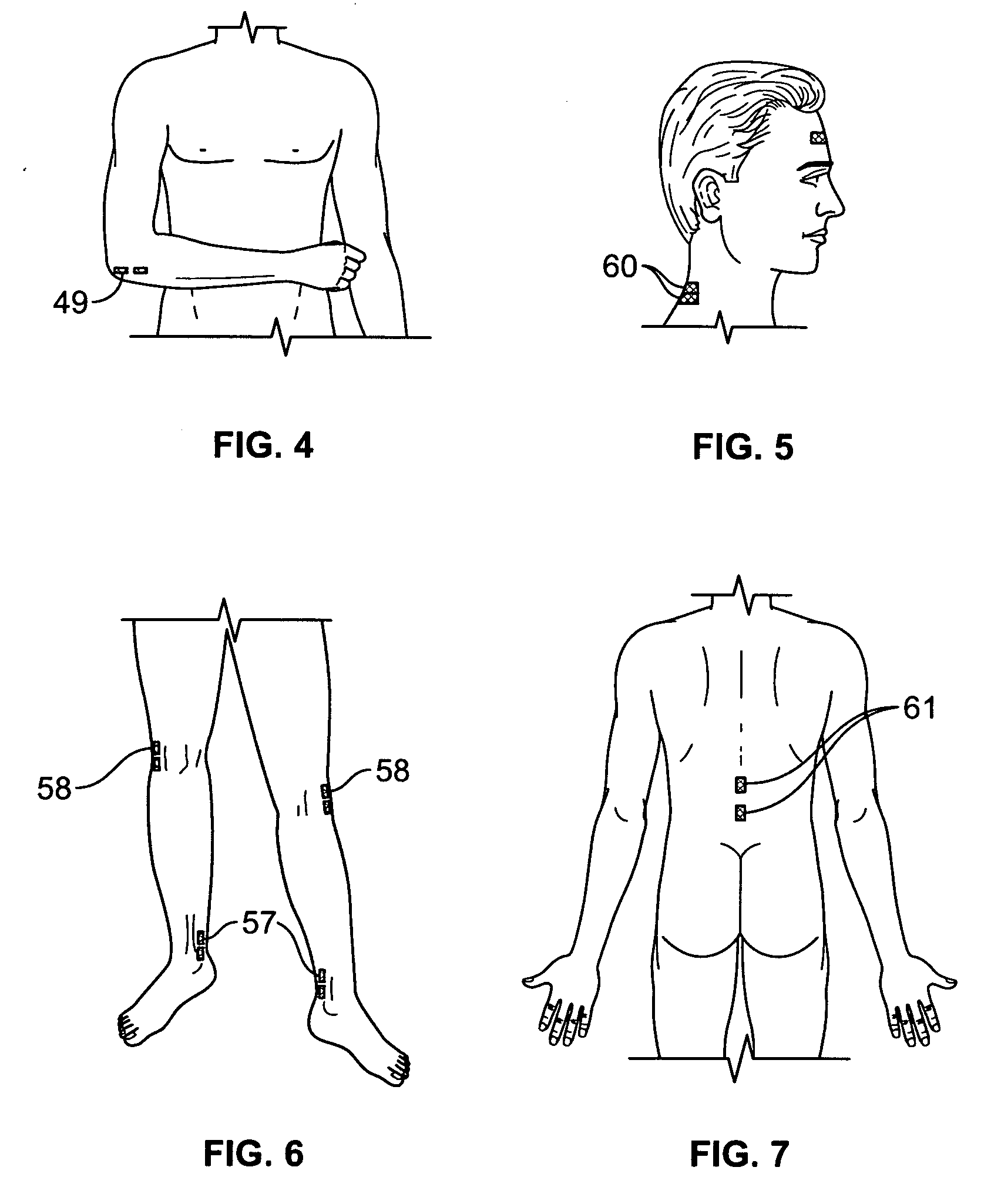Method of using dermatomal somatosensory evoked potentials in real-time for surgical and clinical management
a technology of somatosensory evoked potentials and real-time surgery, applied in the field of neurophysiology, can solve the problems of difficult to obtain reproducible results, use specificity, and technical difficulty in achieving techniques
- Summary
- Abstract
- Description
- Claims
- Application Information
AI Technical Summary
Benefits of technology
Problems solved by technology
Method used
Image
Examples
Embodiment Construction
Definitions
[0030] Somatosensory Evoked Potentials (SSEP)
[0031] Evoked potentials are the electrical summation of signals produced by the nervous system in response to electrical stimuli. Somatosensory evoked potentials (SSEP) mixed nerve responses are typically elicited by stimulation of mixed nerves at various anatomical locations, such as wrist (median), elbow (ulnar), knee (peroneal) and ankle (posterior tibial). The evoked signals are electrical impulses that are recorded from electrodes placed over the crown of the patient's head at the cerebral cortex.
[0032] Dermatomal Somatosensory Evoked Potentials (DSSEP)
[0033] Dermatomal somatosensory evoked potentials (DSSEP) are the physiologic representation of specific nerve root function, used to evaluate sensory input from individual nerve roots. A nerve root is the proximal portion of the nerve which attaches to the spinal cord. Nerve roots are particularly prone to compression and injury by disc protrusions and other “wear and ...
PUM
 Login to View More
Login to View More Abstract
Description
Claims
Application Information
 Login to View More
Login to View More - R&D
- Intellectual Property
- Life Sciences
- Materials
- Tech Scout
- Unparalleled Data Quality
- Higher Quality Content
- 60% Fewer Hallucinations
Browse by: Latest US Patents, China's latest patents, Technical Efficacy Thesaurus, Application Domain, Technology Topic, Popular Technical Reports.
© 2025 PatSnap. All rights reserved.Legal|Privacy policy|Modern Slavery Act Transparency Statement|Sitemap|About US| Contact US: help@patsnap.com



